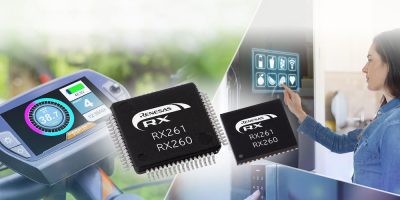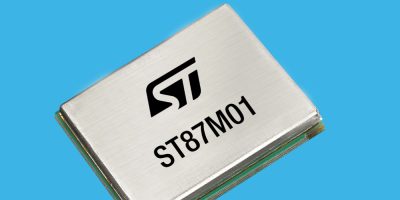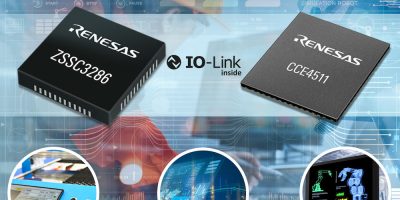Renesas has introduced the RX261 and RX260 microcontroller (MCU) Groups. The new 64 MHz MCUs deliver power efficiency of only 69μA/MHz during active operation and 1μA in standby mode. They also enable designers to easily implement water-resistant capacitive touch sensors and deliver robust security. This combination of performance and features position the RX261/RX260 Group MCUs for applications such as home appliances, building and factory automation, and many others including smart locks, e-bikes and mobile thermal printers.
The RX261/RX260 Group MCUs are based on Renesas’ RXv3 CPU core, enabling 355CoreMark at 64MHz. This score is 2.5 times higher than competing 64-MHz class MCUs. Compared to other 64-MHz class MCUs, the RX261/RX260 also delivers 25 percent lower active current and 87 percent lower standby current. This outstanding power efficiency minimises current consumption during intermittent operation. These low power features help customers meet strict energy regulations for home appliances and extend the operating time of battery-powered applications.
Renesas’ third-generation capacitive touch IP (CTSU2SL) delivers high noise immunity and water resistance, allowing users to implement touch sensors in kitchen appliances and outdoor equipment such as smart locks. The automatic judgement function reduces current consumption during intermittent operation by enabling touch detections even in standby state. The QE for Capacitive Touch tuning tool, design guides, and sample programs ease the implementation of touch sensors in multiple applications.
Today, many consumer and industrial systems offer wireless connectivity features such as Bluetooth and/or Wi-Fi to enable smartphone controls or to download new firmware from cloud servers. By implementing security features with the Renesas Secure IP (RSIP-E11A) and flash protection functions, users can protect their applications from unauthorised use such as data falsification and eavesdropping by attackers. Sample programs help users to implement secure boot and secure firmware update functions quickly and easily.
The RX261 Group MCUs provide a wide range of features, including a Full Speed USB function controller with a high-speed on-chip oscillator (HOCO) that eliminates the need for external crystals to generate an accurate USB clock. A CAN FD module is also included to enable fast and reliable communication. Unlike some other MCUs, the RX261/RX260 Group MCUs include 8 KB data flash enabling customers to eliminate the need for an external EEPROM.







